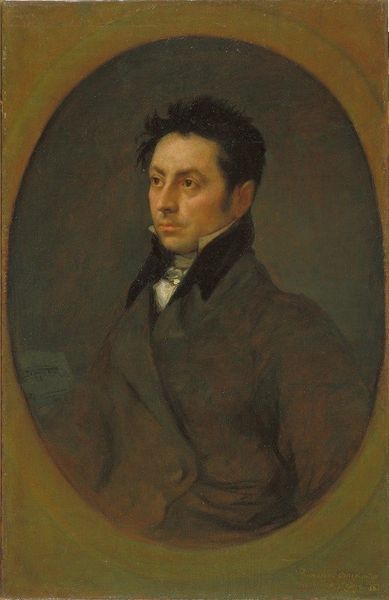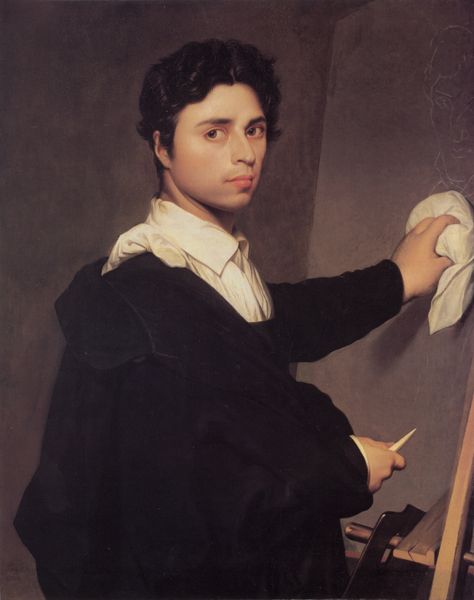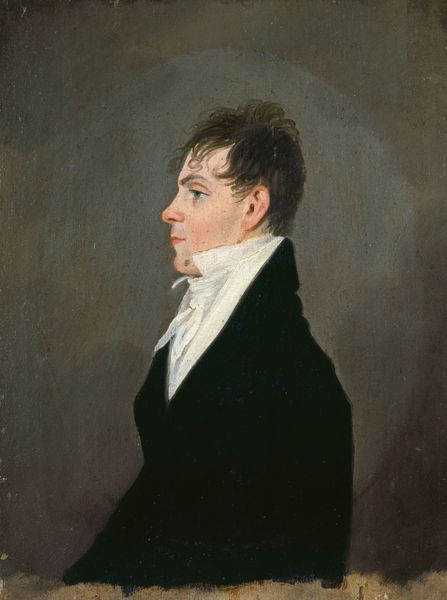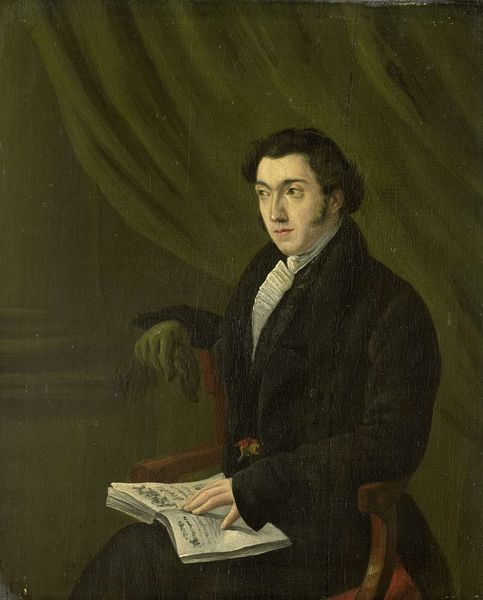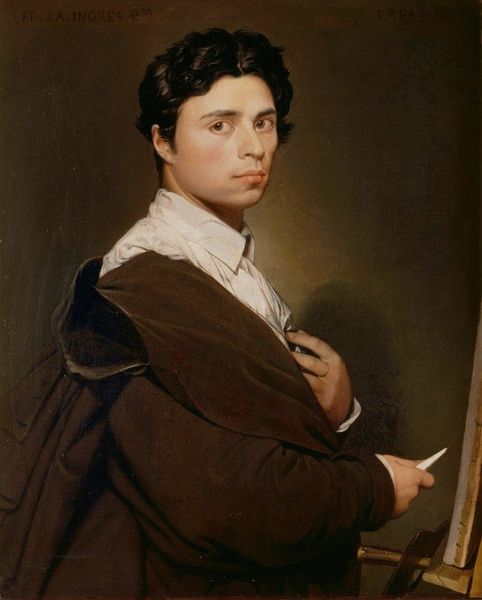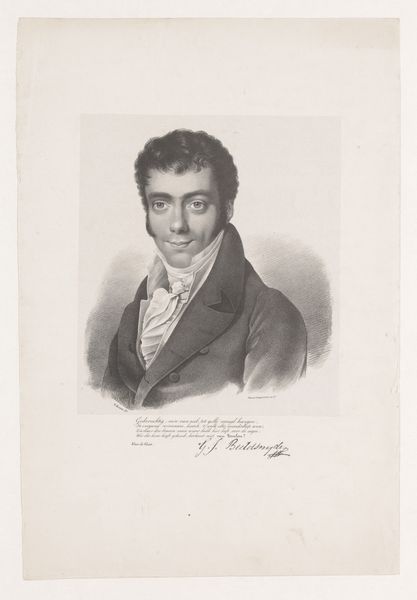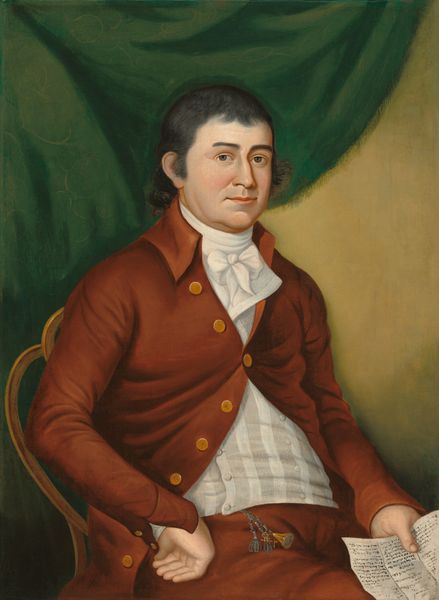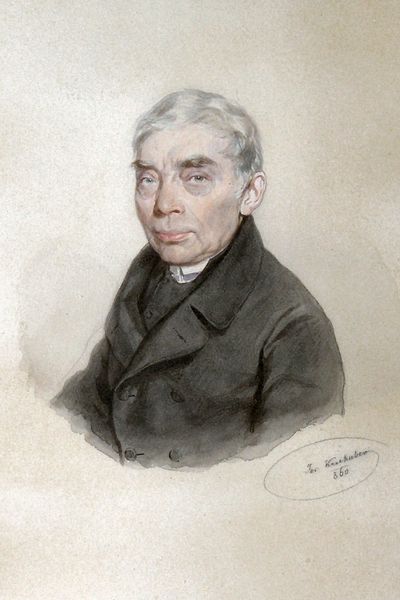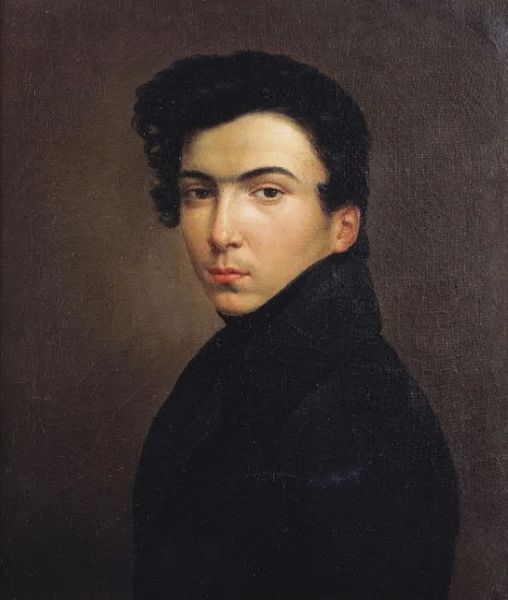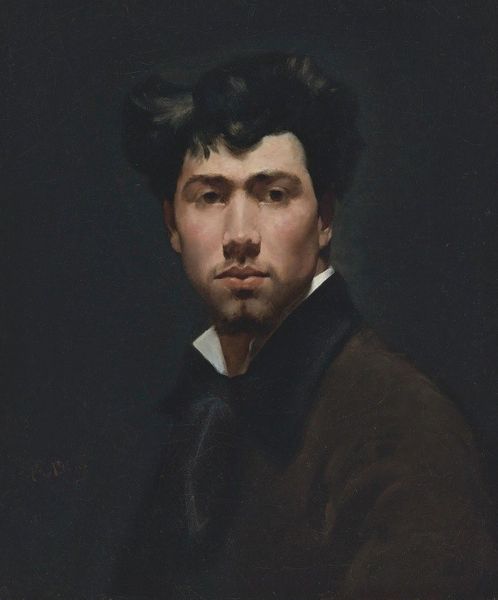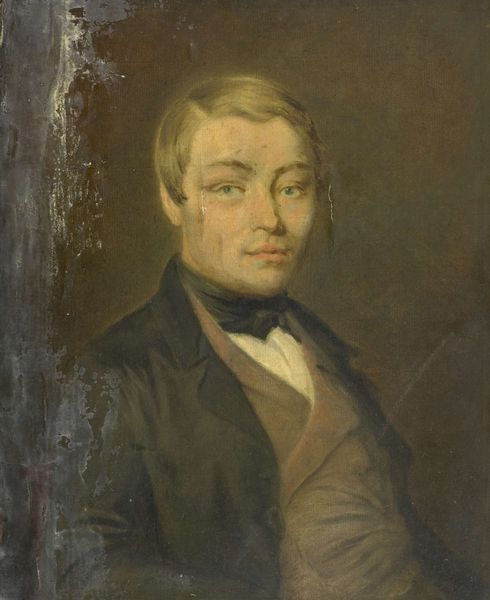
painting, oil-paint
#
portrait
#
painting
#
modern-moral-subject
#
oil-paint
#
academic-art
#
surrealism
#
realism
Copyright: Modern Artists: Artvee
Curator: Auricula, an oil painting by Konstantin Korobov. What do you make of it? Editor: The subject’s clothes are really finely painted, so detailed. It's like he’s stepped right out of the 19th century, or is maybe dressing *as if* he has! But the face feels… more contemporary, or at least deliberately styled in a very contemporary way, so there is a very strange blend going on there. It makes me wonder if the image, itself, it making a commentary about something... Can you elaborate? Curator: The striking thing is how Korobov engages with oil paint as a material here. Notice how he renders the textures – the smooth, almost waxy quality of the skin contrasts with the fabric of the suit. Consider the labor involved in such detailed work; it's a deliberate act of devotion to craft. Are we meant to be seduced by wealth or distracted by vanity? How does the cane act as a form of consumer expression, for the artist himself as much as his muse? Editor: I see what you mean! It’s interesting to think about the social context, about how the labour of creating this portrait is, in a way, mirroring the social status the man seems to want to portray. Curator: Exactly! And that gaze—is it confidence or challenge? Think about portraiture as a form of commodity. It’s about the production and consumption of image. Even the "realism" and "surrealism" you mention in your overview are almost stylistic materials or, more directly, *paint*. How can Korobov highlight the means of production here, of class and wealth and their superficial signifiers, by presenting the individual in such materialist detail? Editor: I never considered those deeper class signifiers embedded in portraiture before, how labor is not only applied within the picture, but implied about the sitter as well. The textures of wealth become textures of paint. It’s really compelling to think about that shift in perspective. Curator: Precisely. It challenges us to rethink not only this specific artwork, but the history and context of portraiture and its ongoing relationship with labour, materiality, and consumption.
Comments
No comments
Be the first to comment and join the conversation on the ultimate creative platform.
